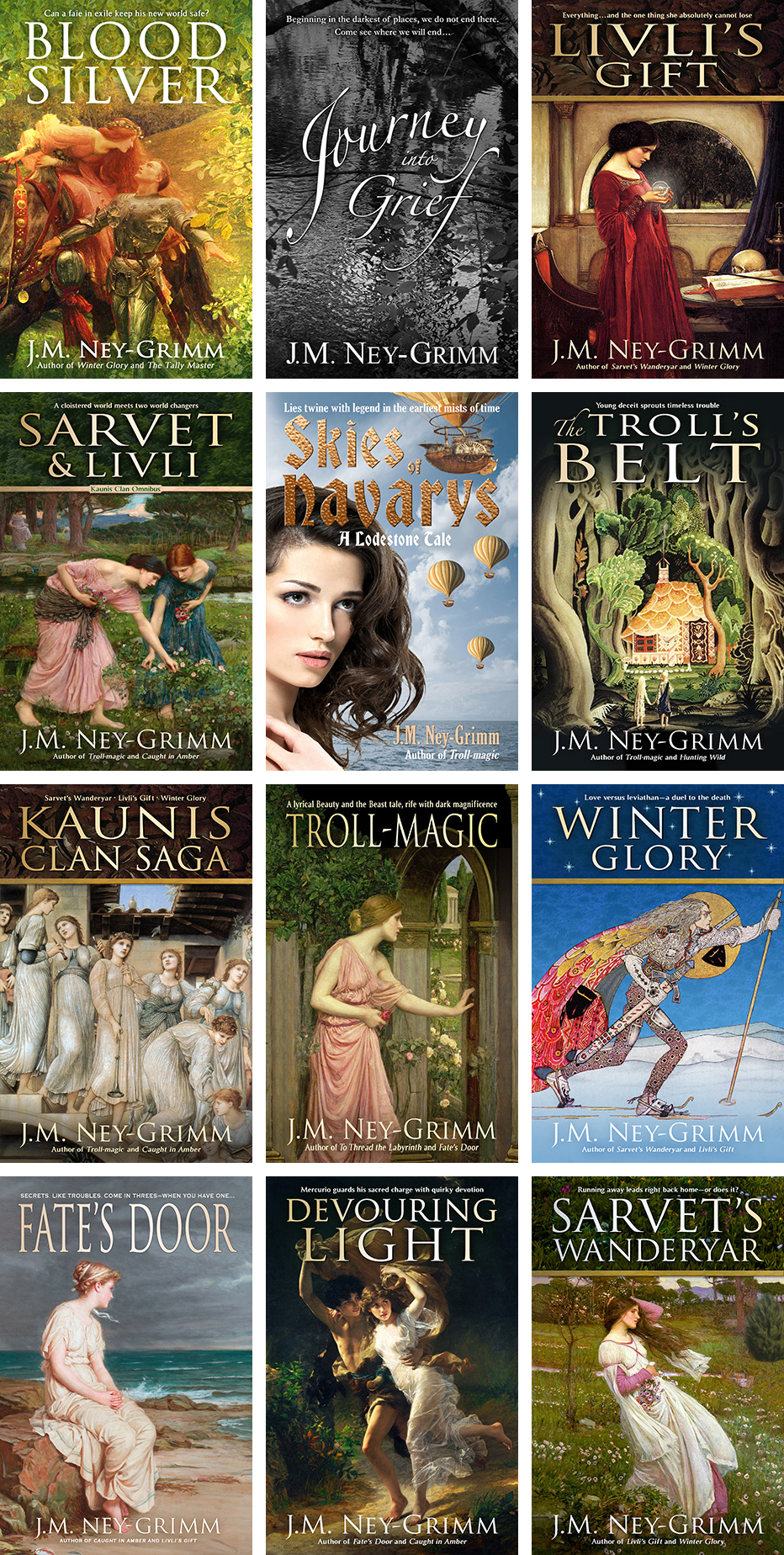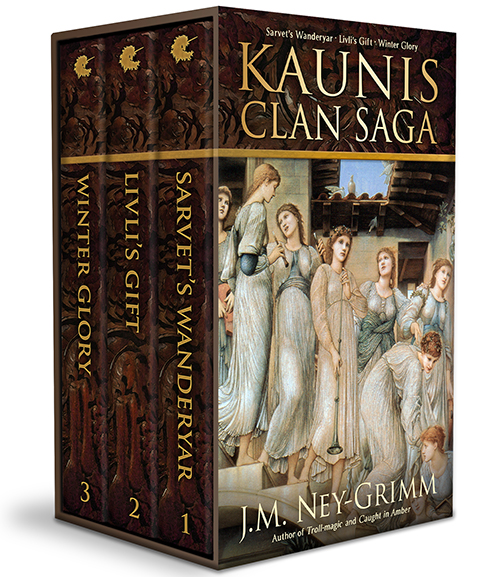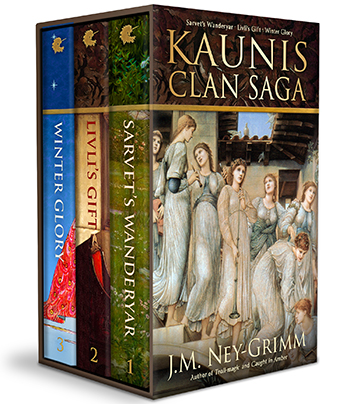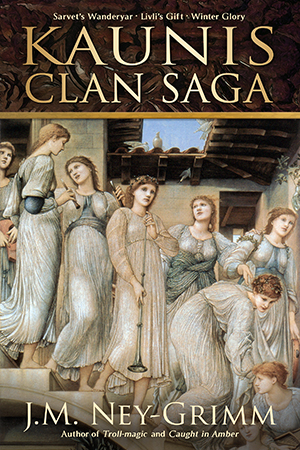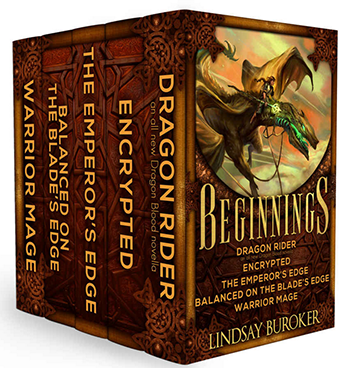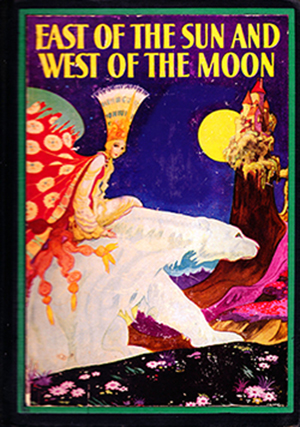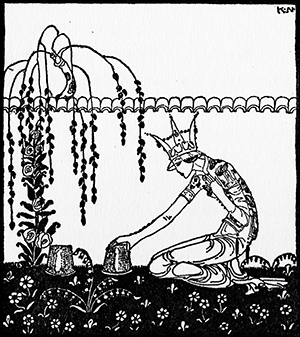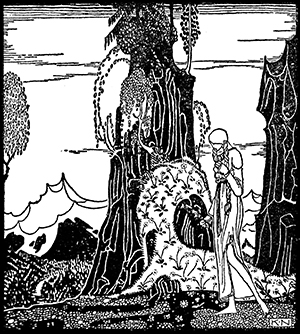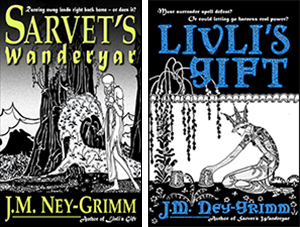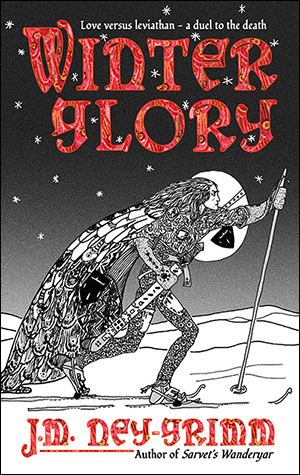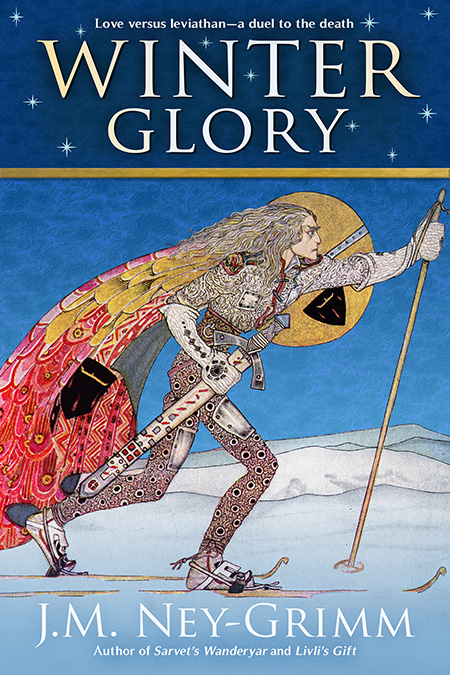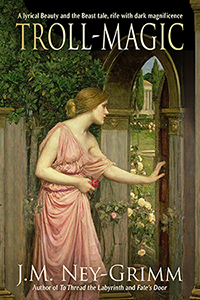 The first ten titles I published as an indie author were set in my North-lands. The world beguiled me, and I was delighted to discover so many stories I wanted to tell about its denizens.
The first ten titles I published as an indie author were set in my North-lands. The world beguiled me, and I was delighted to discover so many stories I wanted to tell about its denizens.
But my eleventh and twelfth stories were set utterly elsewhere.
Devouring Light takes place in our own solar system, although it’s still fantasy, not science fiction. And Serpent’s Foe occurs in the underground duat of the ancient Egyptians.
This departure from my North-lands amplified a concern I’d been weighing for a while.
As a reader, when I encounter a new-to-me author, I have a mixed reaction when I see they have more than four or five books on offer.
On the one hand, if I really liked the book that introduced me to them, I’m delighted that there are more.
On the other hand, I feel a little overwhelmed with deciding which book to read next, especially if there are more than a dozen. Sometimes I’m overwhelmed enough that I can’t choose, and I go on to read someone else altogether.
I worried that readers in my audience might have a similar reaction.
The clear solution was to group my titles into categories or families. Fortunately my stories fell fairly easily into natural clusters.
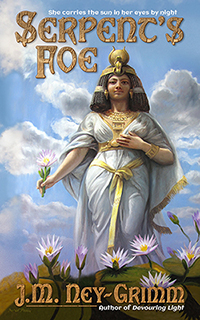 The two newest – one involving the Greco-Roman pantheon amongst the celestial spheres, the other starring a goddess of ancient Egypt – were Mythic Tales.
The two newest – one involving the Greco-Roman pantheon amongst the celestial spheres, the other starring a goddess of ancient Egypt – were Mythic Tales.
The stories about Sarvet and her Hammarleeding family formed the Kaunis Clan Saga.
The stories featuring one of the ancient lodestones of the isle of Navarys became the Lodestone Tales.
And all the rest, set in my North-lands, but lacking any other substantive connection, became simply the North-lands Stories.
I adjusted my list of Titles by J.M. Ney-Grimm accordingly, and it looked a lot more approachable than it had when it was one long string of twelve.
The stories I’ve written since this reorganization have fit comfortably into one of the four categories I established. Hunting Wild was a North-lands Story. Winter Glory belonged in the Kaunis Clan Saga. Caught in Amber and Fate’s Door were perfectly at home in Mythic Tales. The Tally Master was planned from the get-go as a Lodestone Tale. And my current work-in-progress can be considered a Lodestone Tale as well, with the smallest of reaching.
So where’s the problem? (You knew there would be a problem, right?)
The problem was that nowhere on my website (or the websites of the etailers where you can buy my books) was there any explanation of what my “series” names meant. How would potential readers know, if I didn’t tell them?
Well, I put the task on my to-do list – write series intro paragraphs – and dragged my heels. Writing stories was so much more appealing than crafting series descriptions that were clear and explanatory, but also intriguing and brief.
I believe I let that particular task sit undone on my to-do list for nearly 3 years.
Finally, a few months ago, inspiration attacked me – actually woke me in the middle of the night, if I’m remembering right. I jotted down a few notes and went back to sleep.
In the morning, I went to work on those notes and came up with an intro for the Lodestone Tales. Check it out!
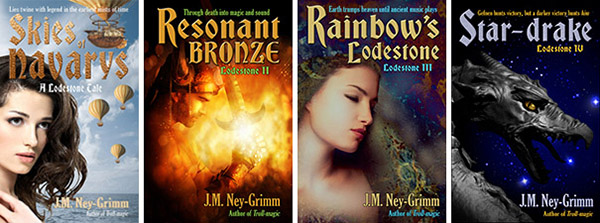
The Lodestone Tales
In the years that came before the ancient days of the North-lands, a brilliant inventor fabricated the lodestones – powerful artifacts that concentrate magical force.
And while men and women walk the earth but a short while, the lodestones persist through centuries, even millennia. When they fall into the hands of mortals, history changes.
Follow the lodestones down through the ages as adventure follows adventure, and ordinary folk rise to meet extraordinary challenges.
Skies of Navarys (1)
The Tally Master (1.5)
Resonant Bronze (2)
Rainbow’s Lodestone (3)
Star-drake (4)
(Although the Lodestone Tales form a rough history, each story stands alone. You need not read them in order.)
* * *
That broke the ice. With one intro present, it bugged me that the other three were absent. I sensed that the words describing the Kaunis Clan Saga were there for the taking, somewhere in my backbrain, if I only made the effort.
With that kind of encouragement…I made the effort! 😉
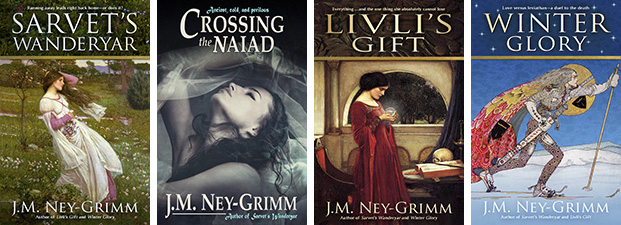
Kaunis Clan Saga
The Hammarleeding people dwell in the high mountain valleys of my North-lands. They wield a tribal magic born of dance and song and the flow of sacred waters.
Ritual and tradition hold a special place in Hammarleeding culture. Their rites are beautiful and uplifting, but they underpin a way of life that features many thou-shalt-nots.
In each story of the Kaunis Clan Saga, one woman – or one man – challenges the shibboleths that threaten her – or his – particular bright dream.
1 • Sarvet’s Wanderyar
2 • Crossing the Naiad
3 • Livli’s Gift
4 • Winter Glory
(Each installment presents a unique protagonist from a fresh generation of the family. The stories stand alone and need not be read in order.)
* * *
Then I dragged my heels again. I was fresh out of ideas and inspiration. How could I describe the Mythic Tales, with nothing in common save their origins in ancient mythologies? And how could I create a captivating introduction to the North-land Stories, which seemed almost a catch-all group created for titles that fit in neither the Lodestone Tales nor the Kaunis Clan Saga?
I decided to let it rest. And let it rest, I did. But not for as long as I had the first time. Once again inspiration arrived in the wee small hours.
But when I looked at my notes by the light of day, I wasn’t quite satisfied. The draft was close, but not quite right, and I didn’t know how to fix it.
I let the draft sit for a month. And then I knew, without even reviewing what I had, that the needed revision was there.
I took that draft out, worked it over, and then I had my Mythic Tales intro.
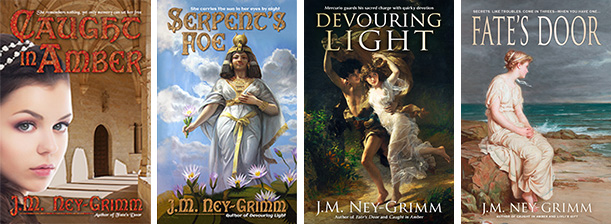
Mythic Tales
What if the goddess Bast lay caged in the underground duat of the ancient Egyptians, entrapped and imprisoned there? What if the messenger god Mercury flew between the celestial spheres of our solar system, rather than between Mount Olympus and Mount Helicon? What if the sea nymphs of old Greece ruled underwater kingdoms beneath the warm waves of the Middle Sea?
My mythic tales feature different worlds and characters, but they share the same rich source of inspiration – the vibrant mythologies of our own ancient history.
(Each story stands alone. You can enjoy any one without having read the others.)
* * *
Okay then! With three out of four complete, I just had to manage that fourth. I’ll admit I borrowed a few phrases from the “About” page on my publisher website, but I got the paragraphs written.
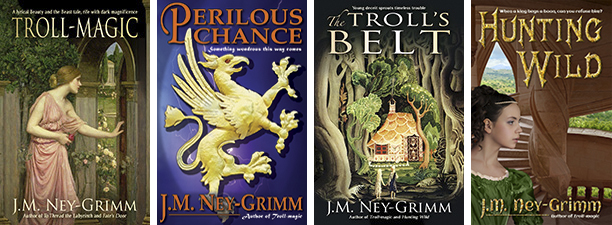
North-lands Stories
Inspired by the Norse folk tale East of the Sun and West of the Moon, I wrote Troll-magic and thereby created a world, the world of my North-lands.
From the cool, forested reaches of Silmaren to the rich, spice-scented empire of ancient Giralliya, the North-lands feature an epic landscape of forgotten henges, vast wildernesses, charming hamlets, and vivid cities.
Within this ever-evolving realm, ordinary people accomplish extraordinary things.
Each story stands alone. You can enjoy any one without having read the others.
Troll-magic, Perilous Chance, and The Troll’s Belt are roughly contemporaneous – taking place during the Steam Age of the North-lands – while Hunting Wild transpires 800 years earlier during its Middle Ages.
* * *
It feels good to have them done. No, it feels great!
But I’d love to hear what you think.
I suspect that my readers have a clearer idea about what my series really are than I do, because I can never read my own work with completely fresh eyes. I always have what I meant to do, as well as what I did do on the revision drafts, jostling in my mind with the final creation.
So what do you think? Did I capture the essence of each series fairly well? Or did I miss?
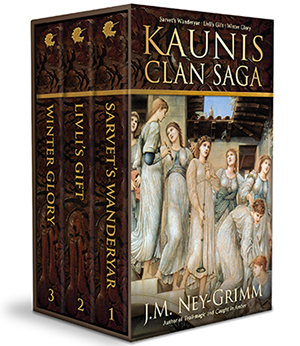 Now, instead of making multiple purchases, you can get Sarvet’s Wanderyar, Livli’s Gift, and Winter Glory in one go.
Now, instead of making multiple purchases, you can get Sarvet’s Wanderyar, Livli’s Gift, and Winter Glory in one go.
